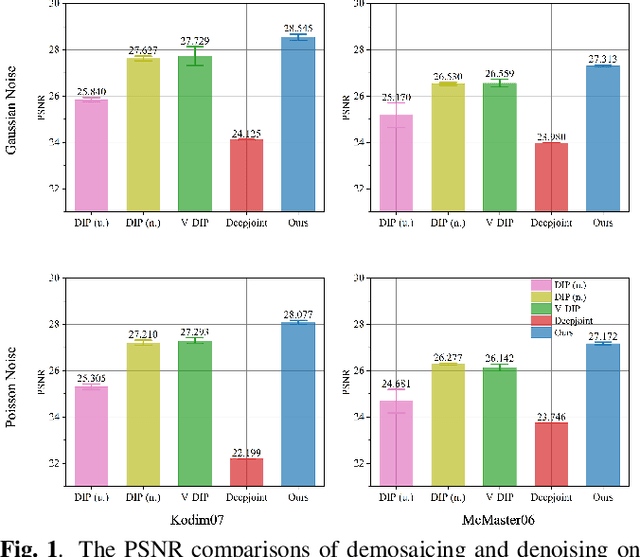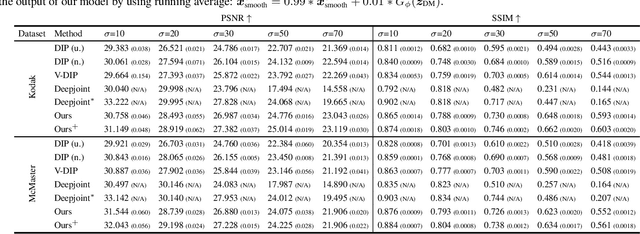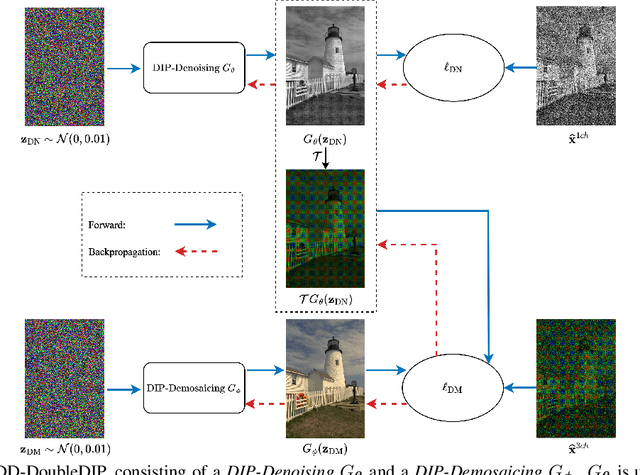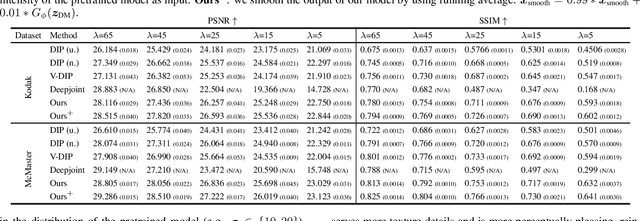Yutong Dai
Collaborative Learning of On-Device Small Model and Cloud-Based Large Model: Advances and Future Directions
Apr 17, 2025Abstract:The conventional cloud-based large model learning framework is increasingly constrained by latency, cost, personalization, and privacy concerns. In this survey, we explore an emerging paradigm: collaborative learning between on-device small model and cloud-based large model, which promises low-latency, cost-efficient, and personalized intelligent services while preserving user privacy. We provide a comprehensive review across hardware, system, algorithm, and application layers. At each layer, we summarize key problems and recent advances from both academia and industry. In particular, we categorize collaboration algorithms into data-based, feature-based, and parameter-based frameworks. We also review publicly available datasets and evaluation metrics with user-level or device-level consideration tailored to collaborative learning settings. We further highlight real-world deployments, ranging from recommender systems and mobile livestreaming to personal intelligent assistants. We finally point out open research directions to guide future development in this rapidly evolving field.
xGen-MM (BLIP-3): A Family of Open Large Multimodal Models
Aug 16, 2024



Abstract:This report introduces xGen-MM (also known as BLIP-3), a framework for developing Large Multimodal Models (LMMs). The framework comprises meticulously curated datasets, a training recipe, model architectures, and a resulting suite of LMMs. xGen-MM, short for xGen-MultiModal, expands the Salesforce xGen initiative on foundation AI models. Our models undergo rigorous evaluation across a range of tasks, including both single and multi-image benchmarks. Our pre-trained base model exhibits strong in-context learning capabilities and the instruction-tuned model demonstrates competitive performance among open-source LMMs with similar model sizes. In addition, we introduce a safety-tuned model with DPO, aiming to mitigate harmful behaviors such as hallucinations and improve safety. We open-source our models, curated large-scale datasets, and our fine-tuning codebase to facilitate further advancements in LMM research. Associated resources will be available on our project page above.
Variational Bayes for Federated Continual Learning
May 23, 2024



Abstract:Federated continual learning (FCL) has received increasing attention due to its potential in handling real-world streaming data, characterized by evolving data distributions and varying client classes over time. The constraints of storage limitations and privacy concerns confine local models to exclusively access the present data within each learning cycle. Consequently, this restriction induces performance degradation in model training on previous data, termed "catastrophic forgetting". However, existing FCL approaches need to identify or know changes in data distribution, which is difficult in the real world. To release these limitations, this paper directs attention to a broader continuous framework. Within this framework, we introduce Federated Bayesian Neural Network (FedBNN), a versatile and efficacious framework employing a variational Bayesian neural network across all clients. Our method continually integrates knowledge from local and historical data distributions into a single model, adeptly learning from new data distributions while retaining performance on historical distributions. We rigorously evaluate FedBNN's performance against prevalent methods in federated learning and continual learning using various metrics. Experimental analyses across diverse datasets demonstrate that FedBNN achieves state-of-the-art results in mitigating forgetting.
Unleashing the Power of Multi-Task Learning: A Comprehensive Survey Spanning Traditional, Deep, and Pretrained Foundation Model Eras
Apr 29, 2024



Abstract:MTL is a learning paradigm that effectively leverages both task-specific and shared information to address multiple related tasks simultaneously. In contrast to STL, MTL offers a suite of benefits that enhance both the training process and the inference efficiency. MTL's key advantages encompass streamlined model architecture, performance enhancement, and cross-domain generalizability. Over the past twenty years, MTL has become widely recognized as a flexible and effective approach in various fields, including CV, NLP, recommendation systems, disease prognosis and diagnosis, and robotics. This survey provides a comprehensive overview of the evolution of MTL, encompassing the technical aspects of cutting-edge methods from traditional approaches to deep learning and the latest trend of pretrained foundation models. Our survey methodically categorizes MTL techniques into five key areas: regularization, relationship learning, feature propagation, optimization, and pre-training. This categorization not only chronologically outlines the development of MTL but also dives into various specialized strategies within each category. Furthermore, the survey reveals how the MTL evolves from handling a fixed set of tasks to embracing a more flexible approach free from task or modality constraints. It explores the concepts of task-promptable and -agnostic training, along with the capacity for ZSL, which unleashes the untapped potential of this historically coveted learning paradigm. Overall, we hope this survey provides the research community with a comprehensive overview of the advancements in MTL from its inception in 1997 to the present in 2023. We address present challenges and look ahead to future possibilities, shedding light on the opportunities and potential avenues for MTL research in a broad manner. This project is publicly available at https://github.com/junfish/Awesome-Multitask-Learning.
Toward Robust Imperceptible Perturbation against Unauthorized Text-to-image Diffusion-based Synthesis
Nov 22, 2023Abstract:Text-to-image diffusion models allow seamless generation of personalized images from scant reference photos. Yet, these tools, in the wrong hands, can fabricate misleading or harmful content, endangering individuals. To address this problem, existing poisoning-based approaches perturb user images in an imperceptible way to render them "unlearnable" from malicious uses. We identify two limitations of these defending approaches: i) sub-optimal due to the hand-crafted heuristics for solving the intractable bilevel optimization and ii) lack of robustness against simple data transformations like Gaussian filtering. To solve these challenges, we propose MetaCloak, which solves the bi-level poisoning problem with a meta-learning framework with an additional transformation sampling process to craft transferable and robust perturbation. Specifically, we employ a pool of surrogate diffusion models to craft transferable and model-agnostic perturbation. Furthermore, by incorporating an additional transformation process, we design a simple denoising-error maximization loss that is sufficient for causing transformation-robust semantic distortion and degradation in a personalized generation. Extensive experiments on the VGGFace2 and CelebA-HQ datasets show that MetaCloak outperforms existing approaches. Notably, MetaCloak can successfully fool online training services like Replicate, in a black-box manner, demonstrating the effectiveness of MetaCloak in real-world scenarios. Our code is available at https://github.com/liuyixin-louis/MetaCloak.
Joint Demosaicing and Denoising with Double Deep Image Priors
Sep 18, 2023



Abstract:Demosaicing and denoising of RAW images are crucial steps in the processing pipeline of modern digital cameras. As only a third of the color information required to produce a digital image is captured by the camera sensor, the process of demosaicing is inherently ill-posed. The presence of noise further exacerbates this problem. Performing these two steps sequentially may distort the content of the captured RAW images and accumulate errors from one step to another. Recent deep neural-network-based approaches have shown the effectiveness of joint demosaicing and denoising to mitigate such challenges. However, these methods typically require a large number of training samples and do not generalize well to different types and intensities of noise. In this paper, we propose a novel joint demosaicing and denoising method, dubbed JDD-DoubleDIP, which operates directly on a single RAW image without requiring any training data. We validate the effectiveness of our method on two popular datasets -- Kodak and McMaster -- with various noises and noise intensities. The experimental results show that our method consistently outperforms other compared methods in terms of PSNR, SSIM, and qualitative visual perception.
Memory-adaptive Depth-wise Heterogenous Federated Learning
Mar 08, 2023Abstract:Federated learning is a promising paradigm that allows multiple clients to collaboratively train a model without sharing the local data. However, the presence of heterogeneous devices in federated learning, such as mobile phones and IoT devices with varying memory capabilities, would limit the scale and hence the performance of the model could be trained. The mainstream approaches to address memory limitations focus on width-slimming techniques, where different clients train subnetworks with reduced widths locally and then the server aggregates the subnetworks. The global model produced from these methods suffers from performance degradation due to the negative impact of the actions taken to handle the varying subnetwork widths in the aggregation phase. In this paper, we introduce a memory-adaptive depth-wise learning solution in FL called FeDepth, which adaptively decomposes the full model into blocks according to the memory budgets of each client and trains blocks sequentially to obtain a full inference model. Our method outperforms state-of-the-art approaches, achieving 5% and more than 10% improvements in top-1 accuracy on CIFAR-10 and CIFAR-100, respectively. We also demonstrate the effectiveness of depth-wise fine-tuning on ViT. Our findings highlight the importance of memory-aware techniques for federated learning with heterogeneous devices and the success of depth-wise training strategy in improving the global model's performance.
A Comprehensive Survey of AI-Generated Content (AIGC): A History of Generative AI from GAN to ChatGPT
Mar 07, 2023Abstract:Recently, ChatGPT, along with DALL-E-2 and Codex,has been gaining significant attention from society. As a result, many individuals have become interested in related resources and are seeking to uncover the background and secrets behind its impressive performance. In fact, ChatGPT and other Generative AI (GAI) techniques belong to the category of Artificial Intelligence Generated Content (AIGC), which involves the creation of digital content, such as images, music, and natural language, through AI models. The goal of AIGC is to make the content creation process more efficient and accessible, allowing for the production of high-quality content at a faster pace. AIGC is achieved by extracting and understanding intent information from instructions provided by human, and generating the content according to its knowledge and the intent information. In recent years, large-scale models have become increasingly important in AIGC as they provide better intent extraction and thus, improved generation results. With the growth of data and the size of the models, the distribution that the model can learn becomes more comprehensive and closer to reality, leading to more realistic and high-quality content generation. This survey provides a comprehensive review on the history of generative models, and basic components, recent advances in AIGC from unimodal interaction and multimodal interaction. From the perspective of unimodality, we introduce the generation tasks and relative models of text and image. From the perspective of multimodality, we introduce the cross-application between the modalities mentioned above. Finally, we discuss the existing open problems and future challenges in AIGC.
Infusing Definiteness into Randomness: Rethinking Composition Styles for Deep Image Matting
Dec 27, 2022Abstract:We study the composition style in deep image matting, a notion that characterizes a data generation flow on how to exploit limited foregrounds and random backgrounds to form a training dataset. Prior art executes this flow in a completely random manner by simply going through the foreground pool or by optionally combining two foregrounds before foreground-background composition. In this work, we first show that naive foreground combination can be problematic and therefore derive an alternative formulation to reasonably combine foregrounds. Our second contribution is an observation that matting performance can benefit from a certain occurrence frequency of combined foregrounds and their associated source foregrounds during training. Inspired by this, we introduce a novel composition style that binds the source and combined foregrounds in a definite triplet. In addition, we also find that different orders of foreground combination lead to different foreground patterns, which further inspires a quadruplet-based composition style. Results under controlled experiments on four matting baselines show that our composition styles outperform existing ones and invite consistent performance improvement on both composited and real-world datasets. Code is available at: https://github.com/coconuthust/composition_styles
Tackling Data Heterogeneity in Federated Learning with Class Prototypes
Dec 06, 2022Abstract:Data heterogeneity across clients in federated learning (FL) settings is a widely acknowledged challenge. In response, personalized federated learning (PFL) emerged as a framework to curate local models for clients' tasks. In PFL, a common strategy is to develop local and global models jointly - the global model (for generalization) informs the local models, and the local models (for personalization) are aggregated to update the global model. A key observation is that if we can improve the generalization ability of local models, then we can improve the generalization of global models, which in turn builds better personalized models. In this work, we consider class imbalance, an overlooked type of data heterogeneity, in the classification setting. We propose FedNH, a novel method that improves the local models' performance for both personalization and generalization by combining the uniformity and semantics of class prototypes. FedNH initially distributes class prototypes uniformly in the latent space and smoothly infuses the class semantics into class prototypes. We show that imposing uniformity helps to combat prototype collapse while infusing class semantics improves local models. Extensive experiments were conducted on popular classification datasets under the cross-device setting. Our results demonstrate the effectiveness and stability of our method over recent works.
 Add to Chrome
Add to Chrome Add to Firefox
Add to Firefox Add to Edge
Add to Edge